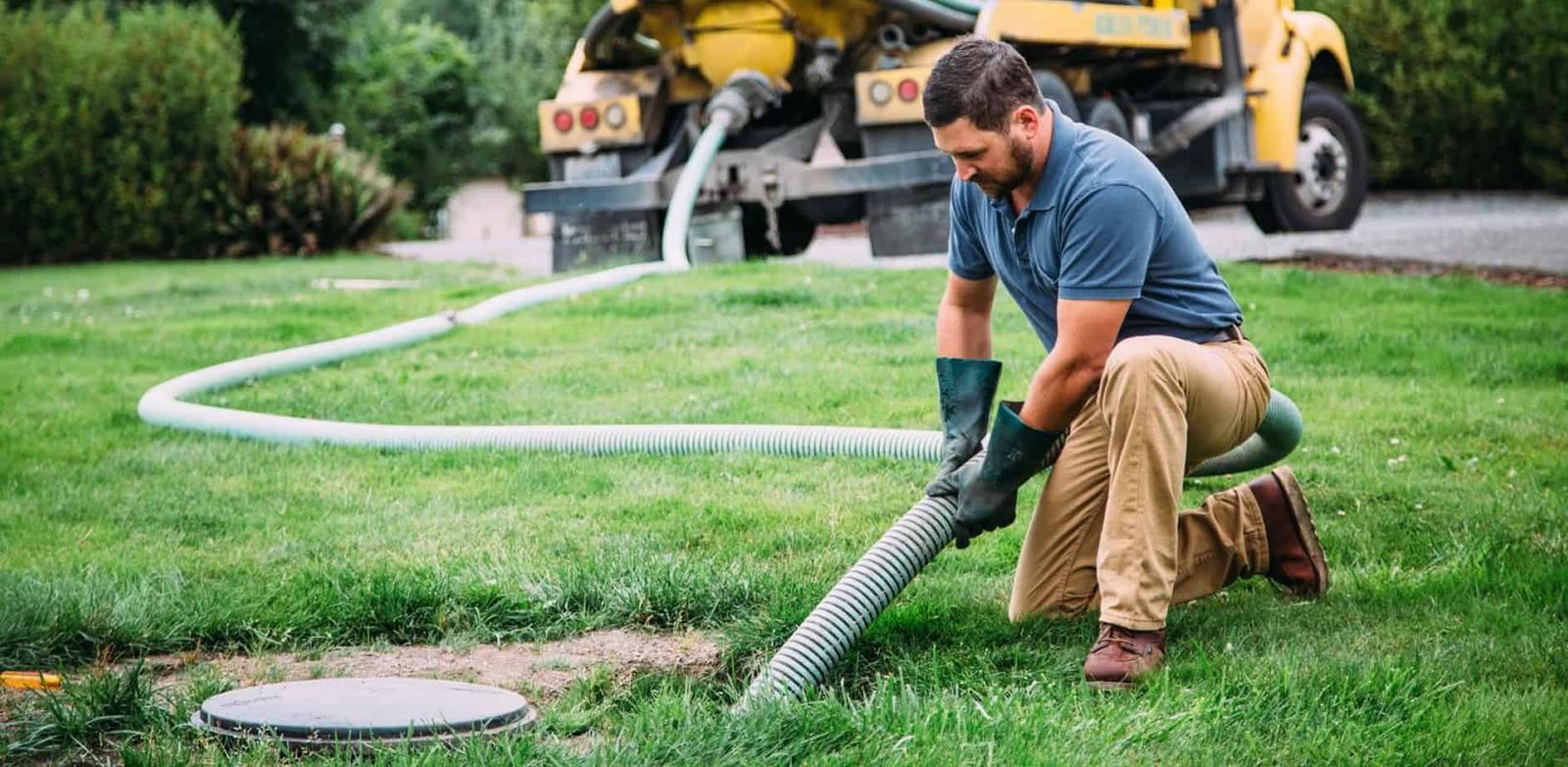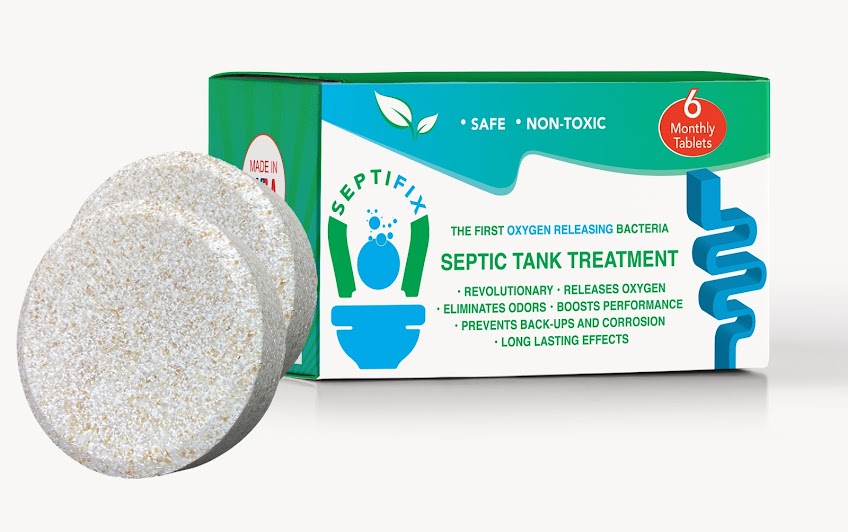How to Clean Septic Tank Naturally?
Most septic tanks need pumping every three to five years. In between scheduled septic tank pumping, it is necessary that homeowners consider natural way to keep their septic tank clean. In this post, we will show you how to take good care of your tank yourself.
So, how to clean septic tank naturally? The most effective way to clean a septic system naturally is by using active dry yeast. However, if you are dealing with a blockage in your septic mainline, use vinegar instead.
Continue reading to find out how to clean your septic system naturally with active dry yeast. We will also look at how to remove many blockages in the septic mainline with vinegar, as well as how to improve your septic system performance naturally.
CALL 1.855.925.0760 For Septic/Plumbing Service

How to Clean Your Septic Tank Naturally With Active Dry Yeast?
Once a month, flush the contents of ¼ oz packet of dry baking yeast down the toilet that’s nearest to the main line to clean your septic system naturally.
Now you might be wondering, “Why yeast of all the things in the world? What’s so special about it?”
Yeast is a great friend of hordes of “good” bacteria and enzymes living in your septic tank — which together give the septic tank its name and without whom it will be practically helpless in treating wastewater.
You may probably know that a septic tank has colonies of enzymes and bacteria that do the all-important job of breaking down the solid waste into liquid and gasses. If it were not for these enzymes and bacteria, all the solid waste that enters the tank would remain as it is, defeating the whole purpose of setting up a wastewater treatment system in the first place.
The good old active dry yeast activates enzymes and promotes the production of bacteria in the tank and, consequently, helps eliminate non-scheduled septic tank cleanups.
One three-packet strip of dry baking yeast costs around $1.99. That’s three months of tender loving care for your septic system!
CALL 1.855.925.0760 For Septic/Plumbing Service
If flushing yeast down the toilet isn’t your thing, use tomatoes.
Yup, you heard us right. Old tomatoes stashed in the vegetable basket of your refrigerator spell good news for your tank’s ecosystem. Just like dry baking yeast, tomatoes promote bacterial growth and help in effective management of solid waste in the tank.
So if you don’t want to use yeast for some reason, make do with old tomatoes. Here are a couple of pointers to keep in mind when using tomatoes as a cleaning agent:
- Grab 3-4 older or even rotten tomatoes and grind them down into the garbage disposal every 4 months. Sending 3-4 tomatoes down the septic tank every 4 months is likely to prove sufficient to provide “good” bacteria to the tank to facilitate breaking down of the solid waste
- In case your house doesn’t have a garbage disposal and you still want to use tomatoes to clean the tank, crush 3-4 tomatoes in a biodegradable bag and flush the bag down the toilet. This will have the same effect as grinding the tomatoes down into the garbage disposal.
CALL 1.855.925.0760 For Septic/Plumbing Service
How to Keep Your Septic Mainline Clear Using Vinegar?
Vinegar can help you keep a clear septic mainline. Here is what you need to do:
- Once every month, fill a gallon jug with white distilled vinegar and scalding water in equal measure
- Before you call it a night, pour this mix down your toilet nearest to the mainline and flush
- Again, flush the first thing in the morning, and now your mainline should be free of any blockages
Vinegar and hot water is a potent mix that can melt any grease in your pipes and open any blockage.
You can expect to spend around $3.5 for one gallon of white distilled vinegar. In other words, it costs less than $2 a month to keep your septic mainline free of blockages!
How to Improve Your Septic System Performance Naturally?
Typically, a septic system needs a thorough cleaning once every three years. With the average American household spending anywhere between $295 and $610 per septic tank pump, it is important that you do your best to keep your septic clean to avoid non-schedule tank cleanups.
Here are some tips to help you improve your septic system performance naturally:
- Opt for a low-flow toilet
Did you know that toilets account for approximately 25% of household water use?
The older toilets use up to 5 gallons of water per flush and as such are not the best thing for a house with a septic tank. A low-flow toilet, which gives a complete flush using only 1.5 gallons water per flush, is a far better option instead. Consider upgrading to a low-flow toilet if you are serious about boosting your septic tank performance naturally.
Also, keep in mind these simple toilet do’s and don’ts:
- Don’t flush the toilet unnecessarily. The more wastewater you send the drain, the harder your septic system has to work to keep things under control
- Routinely check the toilet float valve to ensure water is not running continuously
- Don’t ever flush cigarette butts, over-the-counter medication, disposable diapers, paper towels, unwanted prescriptions, facial tissues, personal hygiene, and other non-decomposable materials
- Do not use WD-40 to clean the toilet bowl. It’s bad for your septic system. Instead, use all-natural or green toilet cleaners
- Avoid putting certain additives in your septic tank
Even though there are different types of septic tanks, certain maintenance aspects remain the same across the board. Regardless of which type septic system you have, don’t ever flush down:
- Cooking oils
- Cooked or raw meat
- Fats
- Grease
These are non-flushable items and won’t do any good to your septic tank, but may harm it big time.
- Distribute washing load over the week
You should not ever do more than 5 washing loads on a single day. Ideally, you should evenly spread the washing load throughout the week to avoid overloading the septic tank with large amounts of water.
Also, run full loads as much as possible. If you are washing a small load, don’t forget to adjust load level settings appropriately to save water.
Lastly, avoid phosphate laundry detergents as they spell bad news for your septic tank. Use liquid laundry detergents instead, as they don’t increase sludge in the septic tank.
Related Questions to How to Clean Septic Tank Naturally
Is Vinegar Safe for Septic Tanks?
Yes, vinegar is safe for your septic tank. For many households, white vinegar is a cleaning staple. Used along with baking soda, it takes care of rust spots, restores the shine to steel appliances, and cleans burn rings from pans. Read more about vinegar in your septic here.
Is Ridex Good for Your Septic Tank?
Ridex is safe for the septic system. But, as per the United States Environmental Protection Authority (EPA), additives such as Rid-X have a debatable effect on your septic tank’s eco-system.
Do You Really Need to Pump Your Septic Tank?
Of course, you need to. On the average, a septic tank requires cleaning every three to five years.
Have a look at our Septic Wiki page if you have additional questions about septic tanks or their cleaning and maintenance.
In case you think it’s time to get your septic tank cleaned, use our state directory to find a reputable, affordable local professional near you.
CALL 1.855.925.0760 For Septic/Plumbing Service
References:
https://dengarden.com/home-improvement/Maintaining-Your-Septic-Tank-Without-Chemicas
https://www.hunker.com/13429466/how-to-add-good-bacteria-to-a-septic-tank










